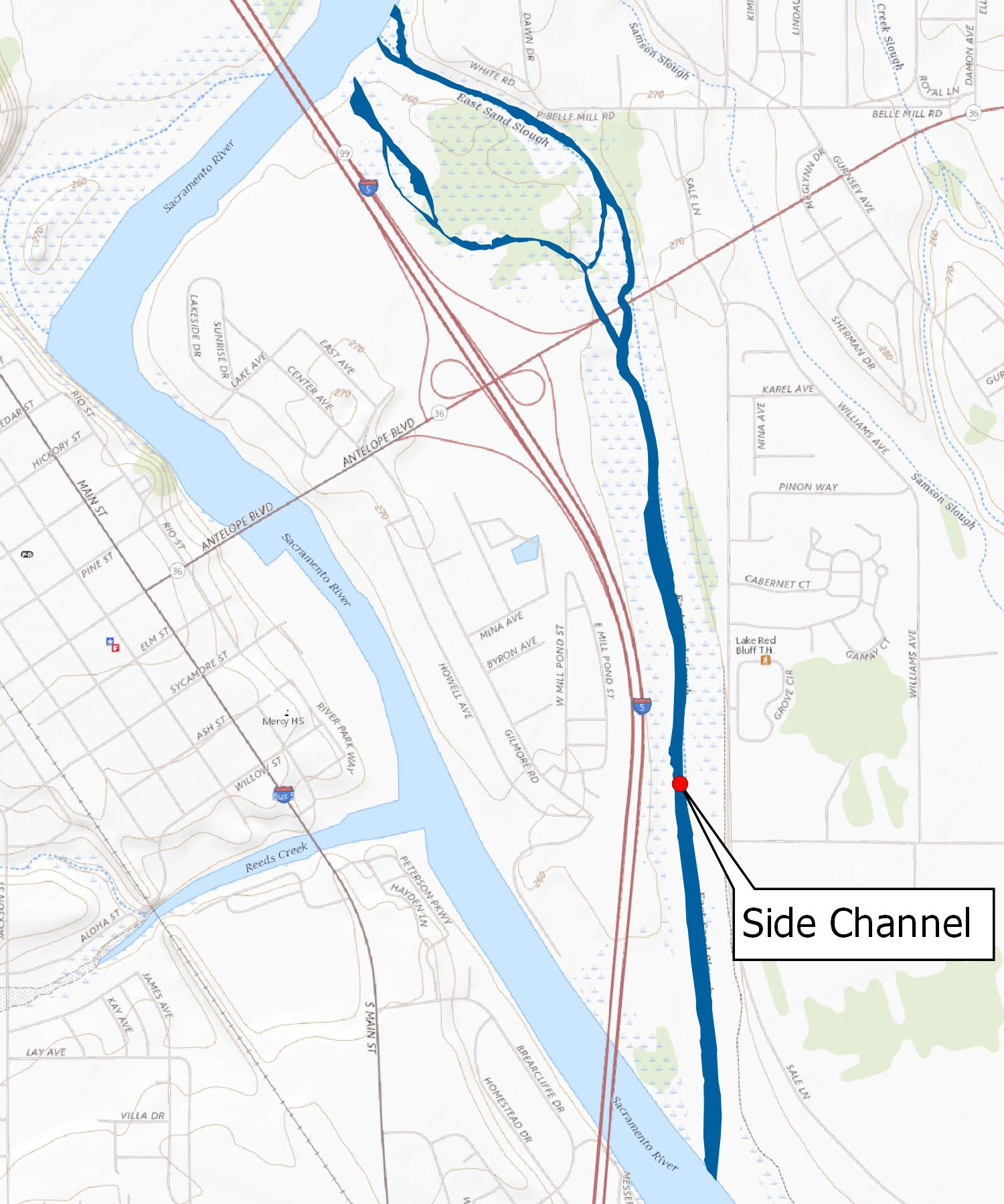East Sand Slough Side Channel Project

Located in Red Bluff, California, the East Sand Slough Side Channel project will create a 2.4 miles of side channels to provide rearing habitat for juvenile Chinook salmon.
About
This project is to provide off-channel habitat for juvenile Winter-run Chinook salmon. The project involved excavating nearly 106,000 tons of material along 2.4 miles of East Sand Slough to connect the upstream and downstream ends to the Sacramento River. This allows resulted in 1.8 will provide flow throughout the year for juvenile salmon.
Timeline
Construction began August 16, 2021. Excavation of 2.4 miles of channels was completed in January, 2022. Native planting along the channel was completed in March, 2022
Contact
- Jane Dolan
- Sacramento River Forum
- jane@riverforum.org
- (530) 518-1011
Upper Sacramento River Anadromous Fish Habitat Restoration Program
The purpose of this program is to increase and improve Chinook Salmon and steelhead spawning and rearing habitat by restoring and establishing additional side-channel habitat and spawning habitat along the Sacramento River in Tehama and Shasta Counties. The declines of naturally spawned salmonid stocks is due in part to the loss of spawning and rearing habitat through reduced gravel recruitment and altered flow patterns which historically created and maintained side channel habitats. Floodplain and side channel habitats serve as important refuge and rearing areas for juvenile salmon and these habitats likely contribute substantially to the productive capacity and life history diversity of Chinook Salmon.
This project is part of the Upper Sacramento River Anadromous Fish Habitat Restoration Program and is funded by the Central Valley Project Improvement Act, the US Bureau of Reclamation, the US Fish and Wildlife Service, and the Bonneville Environmental Foundation California Water Stewardship Program
Partners
Upper Sacramento River Anadromous Fish Habitat Restoration Program is comprised of a network of partnerships. It brings together the expertise, community connections, and implementation capacity of local, state and federal agency staff, nonprofit organizations, water districts, university faculty and graduate students, tribes, and support of willing private landowners.
The US Bureau of Reclamation, NOAA Fisheries, US Fish and Wildlife Service, California Department of Fish and Wildlife, the California Department of Water Resources - Northern Region Office, Pacific States Marine Fisheries Commission, the Resource Conservation District of Tehama County, the Sacramento River Forum, Chico State Enterprises, CSU, Chico, Department of Biological Sciences, Geographical Information Center, Yurok Tribe
